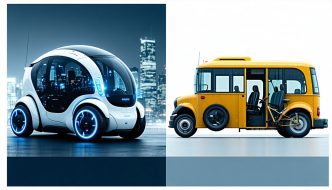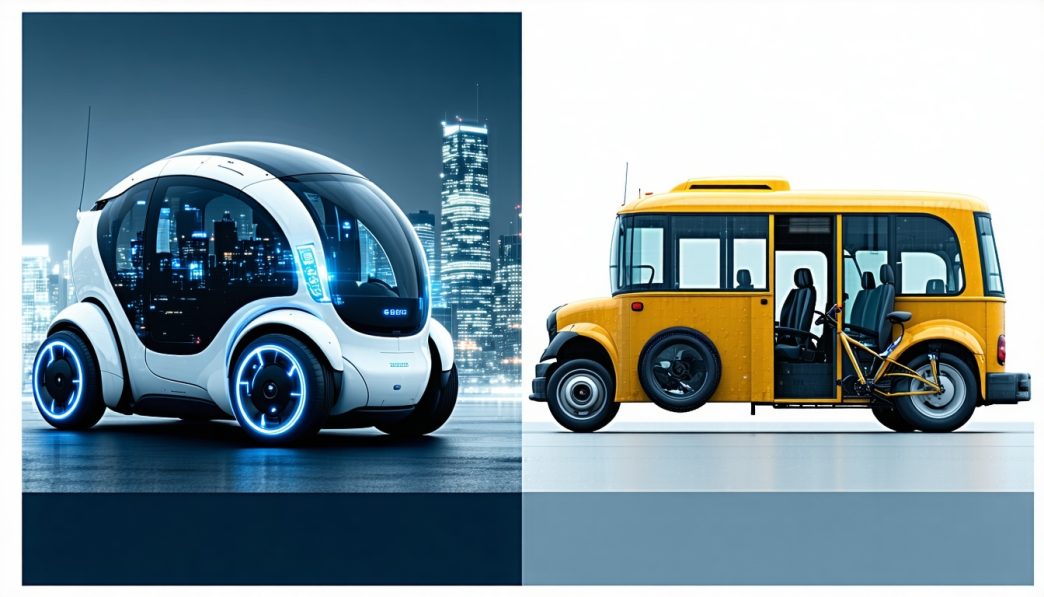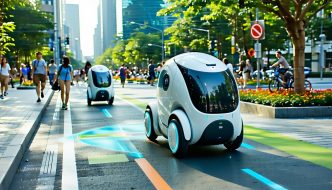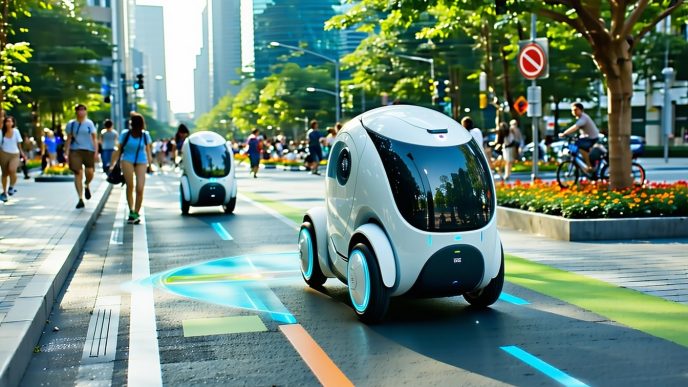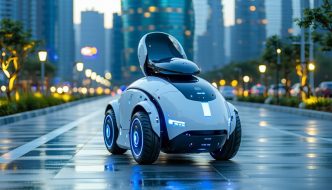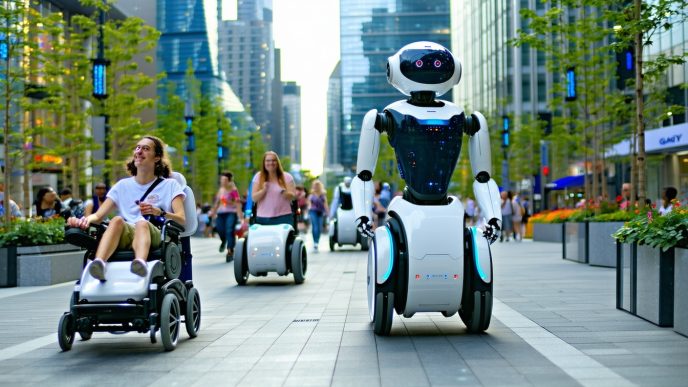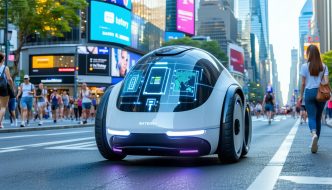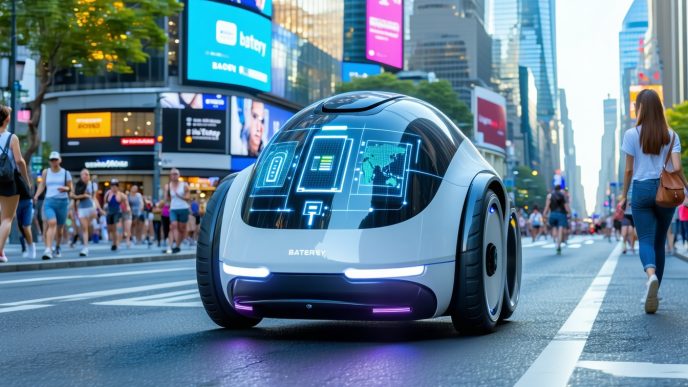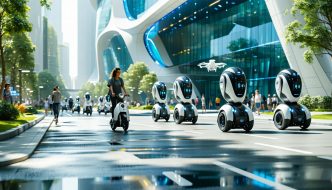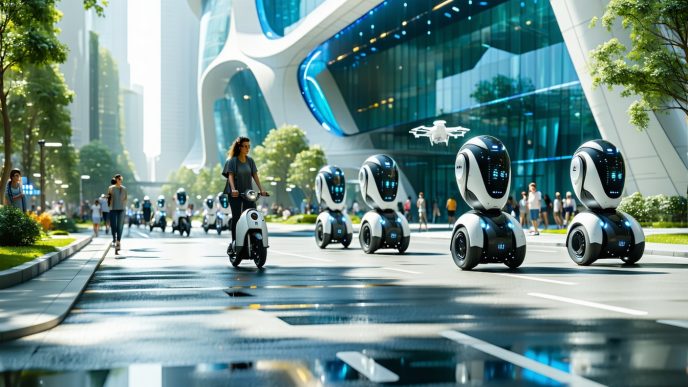The Evolution of Personal Transportation
Historical Context of Transportation Devices
The journey of personal transportation has evolved significantly over the centuries, influenced by technological advancements and societal needs. From the invention of the wheel to the development of complex motor vehicles, each innovation has reshaped how individuals navigate their surroundings. Early on, personal transportation primarily consisted of walking and animal-drawn vehicles. The Industrial Revolution introduced steam-powered machines, leading to the creation of trains and motor vehicles that transformed journeys into more efficient undertakings.
As urbanization increased, bicycles emerged in the 19th century as an affordable and efficient means of transport. They offered individuals greater mobility and became a popular mode of transportation in cities. This continued adaptation ultimately paved the way for lighter, more flexible options such as scooters and mopeds in the 20th century.
In this historical context, modern technology has now presented a new avenue—robot transportation, which provides an innovative approach to personal mobility. For more insights into this evolution, refer to our article on transportation and rideability robots.
Introduction of Rideable Robots in Modern Mobility
Rideable robots symbolize a significant shift in urban mobility, blending robotics with personal transportation. These devices combine cutting-edge technology with practical applications, catering to the demands of busy city dwellers seeking efficient ways to travel. They employ advanced features like artificial intelligence, sensors, and connectivity, allowing users to navigate seamlessly and enhance their commuting experience.
The rise of rideable robots has been attributed to various factors, such as the need for eco-friendly transportation solutions and the growth of smart city initiatives. These robots are designed for short-distance travel, making them an appealing alternative to traditional options like bicycles and scooters. With enhanced stability and safety features, they are suited for various environments, from crowded sidewalks to bike lanes.
Emerging models have even been designed to assist users with limited mobility, illustrating the versatility of this technology. In terms of power, many rideable robots also boast impressive battery specifications, which can be explored further in our article on battery range for rideable robots.
Here is a comparative summary highlighting key differences in personal transportation options:
| Mode of Transport | Speed (mph) | Range (miles) | Typical Use Cases |
|---|---|---|---|
| Bicycles | 15 | 30 – 50 | Commuting, exercise, recreation |
| Scooters | 10 | 15 – 25 | Short trips, urban commuting |
| Cars | 25 | 250 – 400 | Long-distance travel, family use |
| Rideable Robots | 12 | 10 – 20 | Short trips, tech-enhanced mobility |
By exploring the evolution of personal transport and the introduction of rideable robots, it becomes clear that innovation continues to enhance the way people move through their environments. Each option presents its own unique benefits and challenges, which will be delved deeper into as the discussion progresses.
Comparison with Traditional Options
As rideable robots emerge in the personal transportation landscape, it’s essential to evaluate how these advanced machines compare to traditional options like bicycles, scooters, and cars. This section discusses key characteristics and benefits of rideable robots in relation to these longstanding modes of transport.
Rideable Robots vs Bicycles
Bicycles have been a staple of personal transportation for decades, providing an eco-friendly and efficient means of travel. However, rideable robots introduce several new features and functionalities that can enhance the commuting experience.
| Feature | Rideable Robots | Bicycles |
|---|---|---|
| Speed | Up to 15 mph | Up to 28 mph (for racing bikes) |
| Effort Required | Minimal (automated) | Moderate (pedal power) |
| Storage | Integrated storage options | Limited (carriers, baskets) |
| Weather Resistance | Often designed to withstand elements | Varies by bike type |
| Maintenance | Lower with fewer moving parts | Regular maintenance required |
Rideable robots offer a hassle-free riding experience that requires less physical effort compared to traditional bicycles. However, bicycles provide greater speed potential, especially in racing contexts.
Rideable Robots vs Scooters
Electric scooters have surged in popularity for urban commuting, due to their compact size and ease of use. However, rideable robots bring innovative features to the table that can outshine traditional scooters in certain scenarios.
| Feature | Rideable Robots | Scooters |
|---|---|---|
| Speed | Up to 15 mph | 15–20 mph |
| Balance Maintenance | Automated balancing systems | Requires user balance |
| Terrain Adaptability | Enhanced sensors for various terrains | Generally suited for flat surfaces |
| Parking | Self-parking capabilities | Simple kickstand or manual parking |
| User Interaction | Advanced interfaces (touchscreens, voice commands) | Basic controls |
Rideable robots can manage diverse terrains more efficiently than scooters due to advanced sensors. They also offer improved user interactions through technology, potentially enriching the commuting experience.
Rideable Robots vs Cars
Cars remain the cornerstone of personal and family transportation, offering convenience and comfort. Yet, rideable robots present unique advantages that provide alternatives for urban environments.
| Feature | Rideable Robots | Cars |
|---|---|---|
| Traffic Maneuverability | Superior handling in crowded spaces | Limited by routes and road infrastructure |
| Parking Space | Compact and self-parking options | Requires significant space for parking |
| Environmental Impact | Generally low emissions | Higher emissions unless electric |
| Cost of Use | Minimal operational costs | Higher fuel and maintenance costs |
| Accessibility | Designed for universal mobility | May not accommodate all users |
Rideable robots excel in maneuverability and parking convenience within urban settings as compared to cars, which often face challenges with traffic and parking space. Additionally, the environmental footprint of rideable robots is generally smaller, aligning with modern sustainability trends.
The comparisons highlighted here illustrate how robot transportation can complement or serve as alternatives to traditional options for various commuting needs. For more information on rideable robots, explore our article on transportation and rideability robots and discover how these innovations are shaping the future of personal mobility.
Advantages and Limitations
As technology develops, rideable robots present both unique benefits and certain drawbacks when compared to traditional transportation options. Understanding these aspects will help individuals make informed choices about their mobility needs.
Benefits of Rideable Robots
Rideable robots offer several advantages that cater to modern urban lifestyles and personal mobility needs.
| Benefit | Description |
|---|---|
| Convenience | Rideable robots provide an easy-to-use and efficient option for short trips, often eliminating the need for parking and reducing waiting times. For more insight, explore rideable robots for short trips. |
| Sustainability | Many rideable robots are designed with eco-friendly technology, resulting in lower emissions compared to traditional modes of transport, contributing positively to urban environments. |
| Accessibility | These robots can enhance mobility for users with disabilities. They can be designed to accommodate various needs, as discussed in our article on robot mobility aids for disabled users. |
| Compact Design | Rideable robots often have a smaller footprint than cars, making them easier to navigate and store in crowded urban areas. |
| Integration with Smart Technologies | Many rideable robots feature advanced interfaces and connectivity with other devices, improving the user experience. Learn more about these capabilities in robot rider interfaces. |
Drawbacks of Rideable Robots
Despite their benefits, rideable robots also come with limitations that should be considered.
| Drawback | Description |
|---|---|
| Battery Life | The operational range of rideable robots is often limited by battery capacity, which can be a concern for longer trips. Information on battery performances can be found in our article on battery range for rideable robots. |
| Safety Concerns | Stability and safety can be issues, particularly in crowded or uneven environments. For details, see our article on rideable robot stability and safety. |
| Cost | Initial investment costs for advanced rideable robots may be higher than traditional options like bikes or scooters, making them less accessible for some users. |
| Regulatory Hurdles | The integration of rideable robots in public spaces may face legal and regulatory limitations, affecting their adoption in certain areas. |
| Learning Curve | New users may require time to adapt to the controls and functionalities of rideable robots, potentially slowing initial user experience. |
By weighing the benefits and drawbacks of rideable robots, individuals can assess how this innovative mode of transportation compares to traditional options in their specific context. For those interested in the future trends of personal mobility, insights can be found in our article on the future of rideable robotics.
Technology and Innovation
Emerging Technologies in Rideable Robots
The landscape of personal mobility is shifting with the introduction of rideable robots that leverage advanced technologies. These innovations are enhancing user experience, safety, and efficiency in urban transportation.
One notable advancement is the incorporation of artificial intelligence (AI) and machine learning. These technologies allow rideable robots to analyze real-time data, adapt to environmental conditions, and navigate through complex urban landscapes. Additionally, automated obstacle detection systems play a crucial role in ensuring safe travel, minimizing the likelihood of accidents.
Another emerging technology is electric propulsion. Many rideable robots utilize advanced electric motors, which provide a smoother ride and reduce environmental impact. The efficiency of these electric systems is often influenced by battery range, a critical factor for daily commuters. The following table illustrates typical battery ranges for different rideable robots:
| Device Type | Average Battery Range (miles) |
|---|---|
| Smart Scooter | 15 – 25 |
| Electric Skateboard | 10 – 20 |
| Rideable Robot | 20 – 40 |
Moreover, the development of robot rider interfaces significantly enhances user interaction with these devices. Touchscreens, voice commands, and intuitive app integrations allow users to track routes, manage settings, and receive performance analytics, increasing overall user engagement.
Potential Future Developments
Future advancements in rideable robots promise to redefine personal transportation landscapes further. One potential area of development is integrated mobility ecosystems, where rideable robots seamlessly connect with other forms of transport, such as public transit systems and bike-sharing programs. This integration can provide users with a comprehensive mobility solution that maximizes convenience and efficiency.
Another promising area is the improvement of stability and safety features. Engineers are exploring innovative designs and materials that enhance the stability of rideable robots, especially on uneven surfaces. Research in this area is vital for creating safer devices that can confidently navigate urban environments. For more information on this subject, see our article on rideable robot stability and safety.
Furthermore, the use of robot animals and biomimetic designs could transform rideable robots into more relatable and engaging transport options. Concepts such as robot horses and animal inspired transport might appeal to a broader audience, blending functionality with aesthetics and emotional connections.
As the field of rideable robots evolves, the ongoing research and technological development focus not only on performance but also on accessibility. Innovations in robot mobility aids for disabled users will play a crucial role in ensuring that personal transport remains inclusive for everyone. Detailed insights can be found in our article on robot mobility aids for disabled users.
In conclusion, the future of rideable robots holds numerous possibilities that challenge traditional methods of transportation. As these technologies advance, they stand to reshape urban mobility into a more efficient, safe, and user-friendly experience. For further exploration of what lies ahead, visit our section on future of rideable robotics.
Considerations for Personal Transport
As new modes of transportation emerge, understanding their implications becomes essential. When comparing robot transportation with traditional options, several factors come into play, including environmental impact, safety regulations, and cost.
Environmental Impact
The environmental footprint of personal transport options is increasingly scrutinized. Rideable robots present a unique opportunity to reduce carbon emissions and reliance on fossil fuels. Many models are designed to be electric, utilizing batteries that can be recharged from renewable energy sources.
| Transport Method | Average CO2 Emission (g/km) |
|---|---|
| Cars | 120 |
| Scooters | 50 |
| Bicycles | 0 |
| Rideable Robots | 15 (when fully electric) |
Rideable robots typically generate lower emissions compared to traditional vehicles, making them a more sustainable choice for urban commuting. Further details on robot sustainable methods can be found in our article on transportation and rideability robots.
Safety and Regulations
Safety is crucial when considering new modes of transportation. Rideable robots require adherence to safety standards and regulations that are often still developing. This includes requirements for visibility, speed limits, and usage of bike lanes.
| Considerations | Rideable Robots | Traditional Transport |
|---|---|---|
| Helmets Required | Often recommended | Required for bicycles |
| Speed Limits | Varies by location | Typically regulated |
| Safety Testing Standards | Emerging | Established |
Regulatory bodies are working to integrate rideable robots into existing infrastructure, and this may involve new regulations tailored specifically to these devices. To explore the intersection of safety and robotics, check our article on rideable robot stability and safety.
Cost and Affordability
Affordability plays a significant role in the adoption of new transportation options. The initial investment in rideable robots may be higher compared to bicycles or scooters. However, long-term savings can arise from reduced fuel costs and lower maintenance expenses.
| Cost Breakdown | Rideable Robots | Bicycles | Scooters |
|---|---|---|---|
| Initial Purchase | $1,000 – $5,000 | $300 – $2,000 | $200 – $1,000 |
| Maintenance per Year | $100 – $300 | $30 – $100 | $50 – $150 |
| Charging Costs (Annual) | ~$50 | N/A | N/A |
Overall, affordability varies, with rideable robots providing value through unique features and modern technology. More information about the cost-related factors can be found in our articles on rideable robots for short trips and battery range for rideable robots.

